Essential Guide to Laundry Vent Cleaning
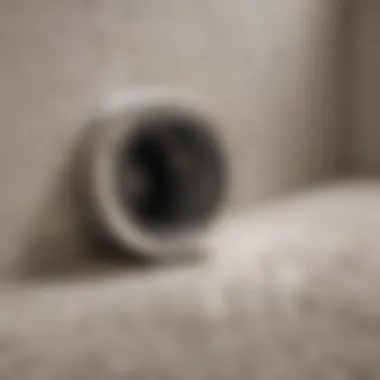
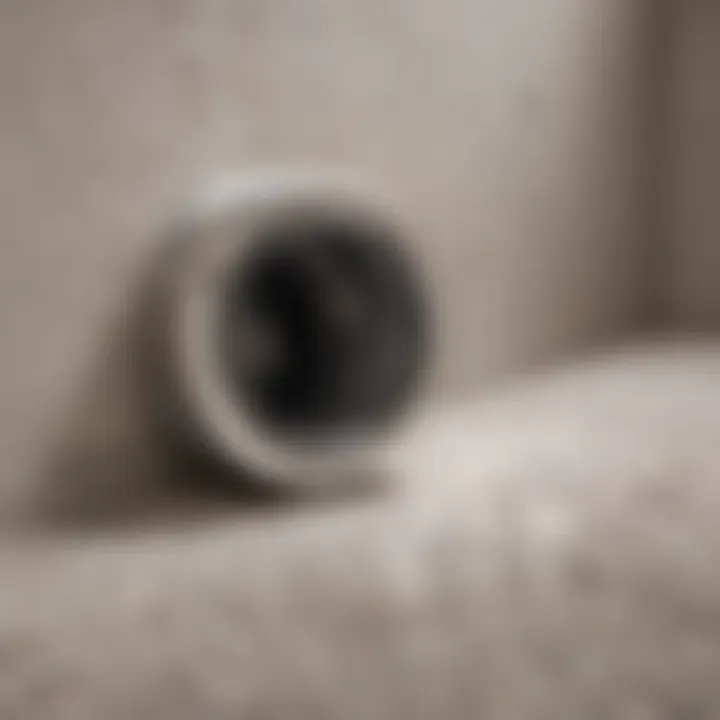
Intro
Maintaining a clean laundry vent is often overlooked in home management, yet it plays a crucial role in ensuring safety and efficiency. The lint that accumulates in dryer vents can lead to several complications, most notably dryer fires and reduced dryer performance. Understanding the significance of this maintenance task is essential for homeowners who wish to protect their property and optimize their appliances.
The process of laundry vent cleaning is multifaceted, involving techniques that may vary from simple DIY methods to professional services. Each approach has its considerations and impacts, making it vital to be knowledgeable and proactive about this aspect of home upkeep. The following sections will explore various points regarding the importance of laundry vent cleaning and offer a comprehensive guide on how to execute it effectively.
This article aims to enlighten readers about the significance of regular vent cleaning, delve into the risks associated with neglect, and outline the steps involved in maintaining a clean dryer vent. Practical guidance tailored towards both DIY enthusiasts and those considering professional help will be provided, ensuring that every homeowner has the tools they need for effective maintenance.
By emphasizing information and practical advice, this piece seeks to foster an environment where homeowners recognize the value of routine vent cleaning. As a result, not only are appliances kept in peak condition, but the risk of home fires is significantly reduced.
Understanding Laundry Vents
Laundry vents play a critical role in every household with a dryer. Understanding their function is essential to appreciating the importance of regular maintenance. A laundry vent is a duct that expels hot, moist air outside during the drying cycle. Its primary job is to ensure that this air moves away from the dryer efficiently. When functioning properly, laundry vents contribute significantly to our laundry's drying process and overall home safety.
What is a Laundry Vent?
A laundry vent, also known as a dryer vent, is a pipe that connects your dryer to the outside of your home. Its purpose is straightforward: to channel the heat and humidity produced during the drying of clothes out of the home. Typically made from materials such as aluminum or galvanized steel, these vents are designed to withstand high temperatures.
The vent incorporates a flap or hood on the exterior, which typically opens to release airflow during operation. When the dryer starts, it pushes air through the duct, carrying moisture and lint with it. If the vent is blocked or inadequately installed, it can lead to severe consequences.
The Role of Laundry Vents in Drying
Laundry vents are integral to the drying process. They help maintain optimal airflow, which is necessary for effective evaporation. Without proper venting, the air inside the dryer becomes saturated with humidity. This can significantly prolong drying times and increase energy consumption.
Consequently, inefficiencies can lead to:
- Higher energy bills due to longer drying cycles
- Increased moisture levels in laundry rooms, creating an environment conducive to mold and mildew
- A greater risk of appliance malfunction or damage due to overheating
Understanding these factors highlights why maintaining clean and unobstructed laundry vents is crucial in any home. Regular inspection and cleaning can prevent many issues, promoting the dryer’s efficiency and the home’s safety.
The Risks of Neglecting Laundry Vent Cleaning
Neglecting laundry vent cleaning can lead to serious issues that extend beyond just inefficient drying times. Understanding these risks is crucial for ensuring safety and optimal performance in the laundry area. When one overlooks routine maintenance of dryer vents, the consequences can affect the household's safety, utility expenses, and the longevity of the dryer itself.
Fire Hazards and Safety Concerns
A primary concern associated with clogged laundry vents is the risk of fire. Dryer lint is extremely flammable, and when it accumulates in the venting system, it creates a dangerous situation. According to the U.S. Fire Administration, dryers were associated with an estimated 2,900 residential fires each year, many of which were caused by failure to clean the dryer vent.
When the airflow is restricted by lint buildup, the dryer overheats, significantly increasing the risk of ignition. Not just the dryer becomes vulnerable, but the entire laundry area can face potential hazards. Homeowners must remain vigilant, as it only takes a small spark in an overheated environment to escalate into a major incident. Regular cleaning mitigates this risk significantly, creating a safer household environment.
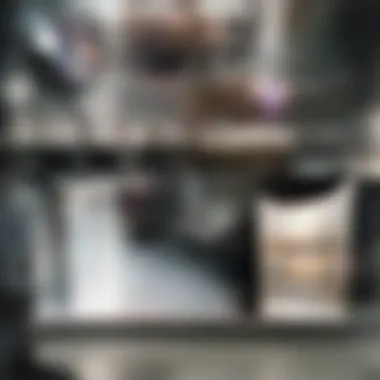

Increased Utility Bills
Another consequence of not maintaining clean dryer vents is the notable increase in utility bills. A dryer with clogged vents works harder to push moist air out, resulting in inefficient operation. This inefficiency requires more energy, which equates to higher electricity costs. Homeowners might not realize this connection immediately, as utility bill increases can be gradual.
When effectively functioning, dryer vents should allow moist air to exit smoothly, maintaining an energy-efficient cycle. Monitoring your bills can reveal trends that suggest the need for vent cleaning, even if the dryer appears operational at first glance. Energy efficiency not only impacts your budget but also contributes to environmental sustainability.
Damage to the Dryer
Failure to clean laundry vents can also lead to physical damage to the dryer itself. The appliance may sustain wear and tear over time if it is forced to operate under stress due to obstructed airflow. Components within the dryer, such as the heating element and motor, may fail prematurely when subjected to excessive heat.
Regular servicing and cleaning of the venting system help in maintaining the integrity of the dryer. Not attending to this maintenance can lead to costly repairs or even the need for a full replacement of the device. Over time, the savings from preventing damage will outweigh the costs associated with cleaning the vents.
Key element: Regular cleaning of laundry vents is not just about efficiency; it is a necessary action for ensuring safety and preserving the functionality of your appliance.
Identifying Signs of Clogged Vents
Identifying the signs of clogged vents is a crucial aspect of laundry vent maintenance. Recognizing these signs early can prevent significant issues that arise from poor airflow. It is important for homeowners to be aware of the symptoms of a blocked vent, as they can lead to dangerous situations, higher energy costs, and damaged appliances.
Longer Drying Times
One of the most common indicators of clogged laundry vents is longer drying times. If clothes are taking significantly longer to dry than usual, it may suggest that the vent is obstructed. This means the dryer cannot expel moist air effectively. Over time, if this issue persists, it can cause a decrease in the efficiency of the dryer, leading to frustration and increased energy bills. Monitoring drying cycles regularly helps pinpoint changes in performance.
Burning Smells
Another alarming signal is the presence of burning smells during a drying cycle. This can be indicative of lint buildup within the vent system, which can ignite due to the heat generated by the dryer. If you notice a burning odor, it is vital to stop the dryer immediately and investigate. Ignoring this warning could potentially lead to a fire hazard in your home. It is important not to underestimate this sign—it represents an urgent need for vent cleaning.
Excessive Heat in the Laundry Room
Excessive heat in the laundry room during or after a drying cycle is also a sign of airflow issues. A properly functioning dryer should not significantly raise the temperature of the area in which it operates. If the room becomes noticeably warmer, it indicates that the vent is not effectively removing heat and moisture. This inefficiency could worsen over time, possibly causing the dryer to overheat, leading to malfunction or breakdown. Homeowners should be vigilant about monitoring the temperature around their dryers.
Identifying these signs promptly can save homeowners time and money, ensuring that their laundry routine remains efficient and, most importantly, safe.
The Process of Laundry Vent Cleaning
Cleaning dryer vents is crucial for maintaining the efficiency and safety of your laundry appliances. Over time, lint accumulates in the venting system. It restricts airflow, which can lead to longer drying times, increased energy usage, and even potential fire hazards. Understanding the process of laundry vent cleaning ensures you are taking the right measures to prevent these issues, enhancing the lifespan of your dryer. Regular cleaning can ultimately result in substantial savings on utility bills and improve safety in your home.
Tools Required for Cleaning
Before delving into the cleaning process, it is essential to gather the right tools. Having the correct equipment will make the job more efficient and safe. Here are the common tools needed:
- Vent Brush: A long-bristle brush specifically designed to reach deep into the vent.
- Vacuum Cleaner: A shop vacuum with a hose attachment works best for removing debris.
- Screwdriver: Necessary for removing the vent cover.
- Duct Tape: Used to secure any loose ducts during the cleaning process.
- Safety Goggles and Gloves: Protect your eyes and hands from dust and debris.
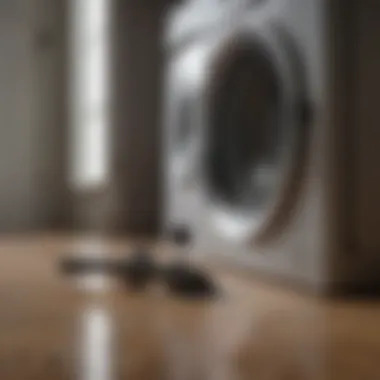
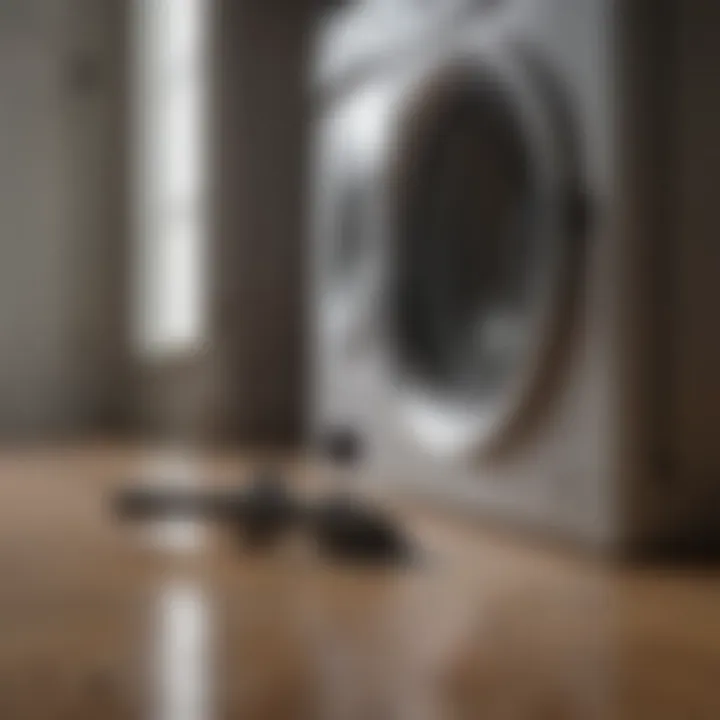
Having these tools on hand will streamline the cleaning process and help ensure it is done thoroughly.
Step-by-Step Cleaning Procedure
The process of cleaning your laundry vents requires careful attention. Here is a clear, step-by-step guide to follow:
- Disconnect the Dryer: Start by unplugging your dryer from the power source to ensure safety throughout the process.
- Remove the Vent Cover: Use your screwdriver to take off the vent cover. This provides access to the venting system itself.
- Inspect the Vent: Look inside the vent to assess the level of lint buildup. Knowing how much lint is present will guide your cleaning efforts.
- Use the Vent Brush: Insert the vent brush into the ductwork. Move it around to dislodge lint accumulation. Make sure to push and pull as needed to reach clogs.
- Vacuum the Ducts: After brushing, use the vacuum cleaner to suck up loose debris. Pay special attention to corners and bends in the ducts.
- Clean the Outside Vent: Don’t forget to check the external vent. Clear any obstruction that may hinder airflow.
- Reassemble the Vent Cover: Once everything is clean, reattach the vent cover securely.
- Reconnect the Dryer and Test: Plug your dryer back in and run a short cycle to ensure everything is functioning properly.
Regular cleaning of dryer vents not only enhances efficiency but also reduces fire risk significantly.
By following these steps, you can ensure that your laundry vent system operates smoothly, thus promoting safety and efficiency.
Professional Vent Cleaning Services
In the realm of maintaining a safe and efficient home environment, professional vent cleaning services emerge as an essential consideration. These services specialize in the thorough cleaning of dryer vents, ensuring they operate optimally and do not pose safety hazards. Homeowners may believe that vent cleaning is a simple task they can manage on their own. However, there are significant benefits and important considerations that justify hiring professionals for this task.
One of the primary reasons to engage professional vent cleaning services is their expertise and experience in the field. Trained technicians possess the skills to detect issues that may not be visible to the untrained eye. They can identify buildup, such as lint or debris, which can severely limit airflow and increase the risk of fires.
Additionally, professional services often utilize specialized equipment designed to clean vents more thoroughly than standard household tools. This equipment allows for a more comprehensive approach to cleaning, particularly in hard-to-reach areas. The result is not only a cleaner vent but also increased overall efficiency of the dryer, leading to shorter drying times and reduced energy costs.
Furthermore, using a professional service can save significant time and effort. Cleaning dryer vents is often a labor-intensive process that demands a considerable investment of time and energy. Experts can complete the task efficiently, allowing homeowners to focus on other priorities.
"Regular professional vent cleaning can extend the life of your dryer and prevent costly repairs related to neglected maintenance."
In sum, hiring a professional for laundry vent cleaning not only boosts safety but also enhances the dryer’s efficiency and lifespan.
When to Hire a Professional
Determining when to hire professional vent cleaning services hinges on various indicators and personal circumstances. If you notice signs of performance decline in your dryer—such as prolonged drying times or excessive heat—it may be time to consult a professional. Also, if the laundry room feels unusually warm during operation, this signals possible clogs within the vent, necessitating expert intervention.
In addition, if it has been more than a year since your last professional cleaning, it’s wise to schedule a visit. Even with regular maintenance, build-up gradually accumulates, which can quickly turn to a fire hazard. Beyond performance indicators, homeowners should consider the age and condition of their dryer. Older appliances may require more frequent professional cleaning due to wear and tear on components.
What to Expect from Professionals
When hiring a professional vent cleaning service, it is crucial to understand what to expect during the process. First, a technician will typically perform a thorough inspection of the venting system. This inspection will help identify blockages and assess the overall condition of the vent. Based on the findings, the specialist will create a tailored cleaning plan.
The cleaning procedure itself generally involves the use of high-powered vacuums and rotary brushes that dislodge and remove lint buildup effectively. The technician will pay close attention to all vent sections, including ducts, transitions, and the exhaust outlet. This ensures comprehensive cleaning, eliminating all debris that can exacerbate fire hazards or hinder dryer performance.
After completing the cleaning, the technician should provide a report detailing the work performed and suggest future maintenance schedules. This documentation is not only useful for the homeowner but also for any future buyers of the property who may be interested in the maintenance history.
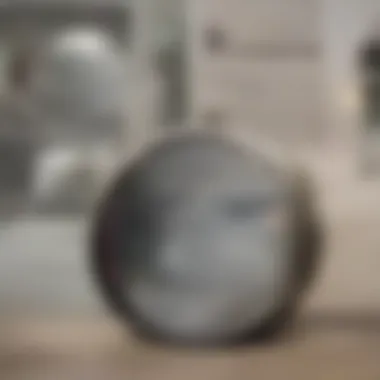
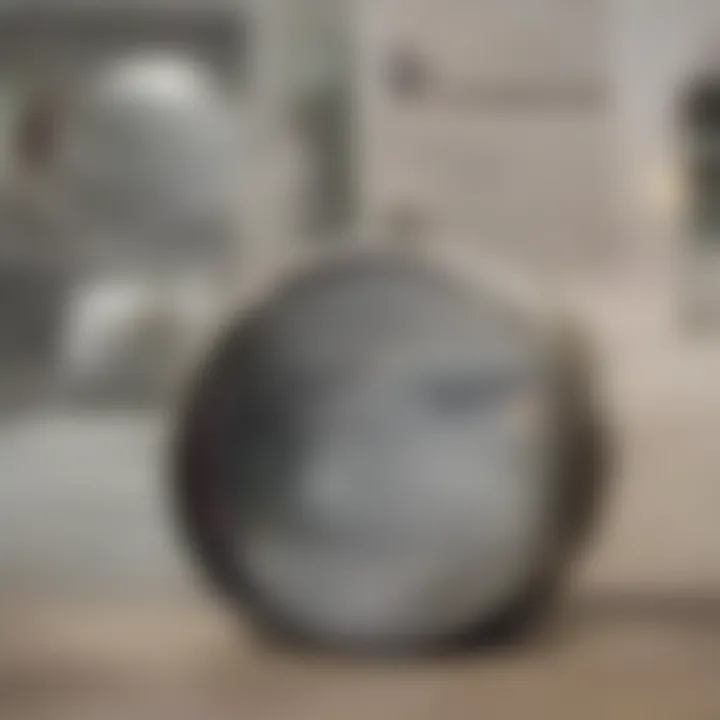
Maintaining Clean Vents: Best Practices
Maintaining clean laundry vents is essential to ensuring both safety and efficiency in your home. A clean vent system allows warmer air to escape freely, which directly contributes to the drying effectiveness of your laundry appliance. Moreover, neglecting this maintenance can lead to severe safety risks, such as fire hazards and other costly consequences.
Regular Inspection Scheduling
Scheduling regular inspections for your laundry vents is vital. How often you should check the vents will depend on several factors, including the frequency of your laundry usage and the type of materials being dried. A good baseline is to inspect the vent at least once a year. During these inspections, homeowners should look for:
- Blockages or lint build-up
- Any visible signs of wear or damage
- Cracks in the venting material
If you notice any irregularities, it may be time to perform a deeper cleaning or consult a professional.
When planning these inspections, it may be beneficial to align them with seasonal changes. For example, checking your vents in spring can set a maintenance routine that prepares your dryer for the increased usage during summer. Regular inspections play a crucial role in preventing small issues from leading to larger problems.
Utilizing Vent Cleaning Kits
Utilizing vent cleaning kits is another practical approach for maintaining your laundry vents. These kits typically include brushes, rods, and sometimes vacuum attachments designed for lint removal. They are easy to use and can be a cost-effective solution for homeowners who prefer DIY methods.
Here are some points to consider when using vent cleaning kits:
- Select the right kit: Ensure the kit is compatible with the size and length of your vent.
- Follow instructions carefully: Each kit will come with specific guidelines for effective cleaning.
- Regular usage: Incorporate these cleaning kits into your routine. Use them at least twice a year to maintain optimal airflow.
"Routine maintenance not only enhances the lifespan of your dryer but also minimizes the risks of potential hazards."
By consistently employing these best practices, you can effectively maintain your laundry vents. This proactive approach leads to better efficiency, reduced utility bills, and a safer home environment.
Ending: The Necessity of Laundry Vent Maintenance
Laundry vent maintenance is not just an optional chore; it is essential for safety, efficiency, and longevity of your dryer. Properly cleaned vents help to prevent fires, reduce energy consumption, and extend the lifespan of your appliance. Ignoring this task can lead to significant hazards, as lint buildup is a common cause of house fires. Furthermore, a clean vent allows dryers to function optimally, saving you money in utility bills.
The need for laundry vent cleaning becomes particularly pressing when considering the factors that influence not only personal safety but also overall home comfort. When the function of the dryer is compromised due to a clogged vent, it takes longer to dry clothes. This not only frustrates users but increases wear on the appliance.
Recap of Key Points
In summary, several critical points highlight the necessity of regular laundry vent maintenance:
- Fire Prevention: Clogged vents are a leading cause of dryer-related fires. Regular cleaning significantly reduces this risk.
- Cost Efficiency: Clean vents lead to lower utility bills as dryers operate more effectively.
- Longevity of Appliances: Regular maintenance extends the lifespan of your dryer, allowing for better performance over time.
- Health and Safety: Keeping vents clean reduces the risk of carbon monoxide buildup or other health hazards.
By addressing these key areas, homeowners can ensure they not only satisfy practical needs but also safeguard their living space.
Encouragement for Action
It is crucial for homeowners to take a proactive approach regarding laundry vent maintenance. Setting a regular cleaning schedule can save you time and potential dangers down the line. Inspect your vents at least once a year or more if you notice specific signs of blockage. Consider investing in quality vent cleaning kits that promote more effective cleaning processes.
When cleaning becomes overwhelming or risky, do not hesitate to enlist professional services. They have the right equipment and expertise to ensure that your laundry vents are thoroughly cleaned.
Remember: Regular maintenance is a small investment compared to the potential costs of neglect. Take action today to protect your home and enhance the efficiency of your laundry appliances.















